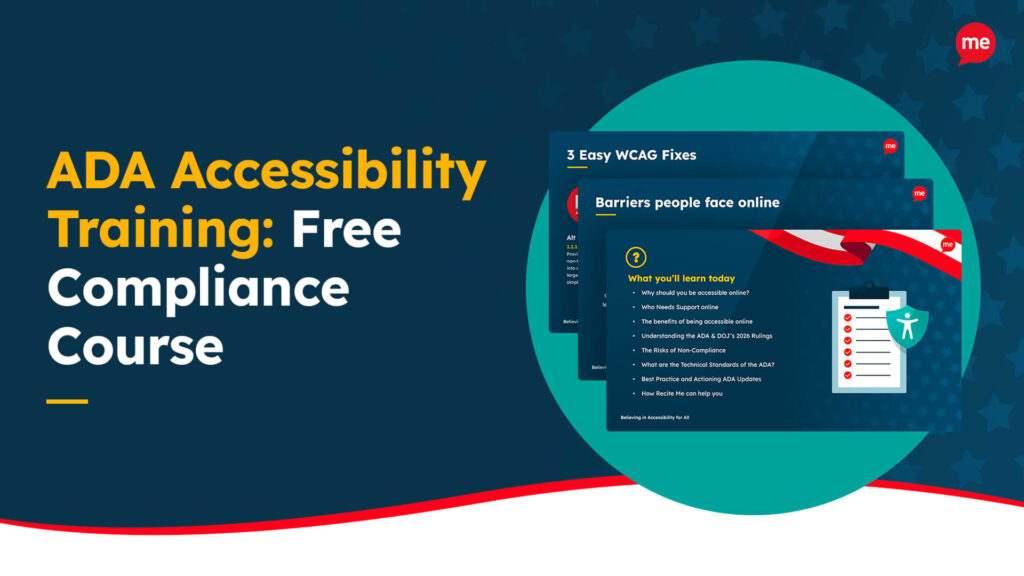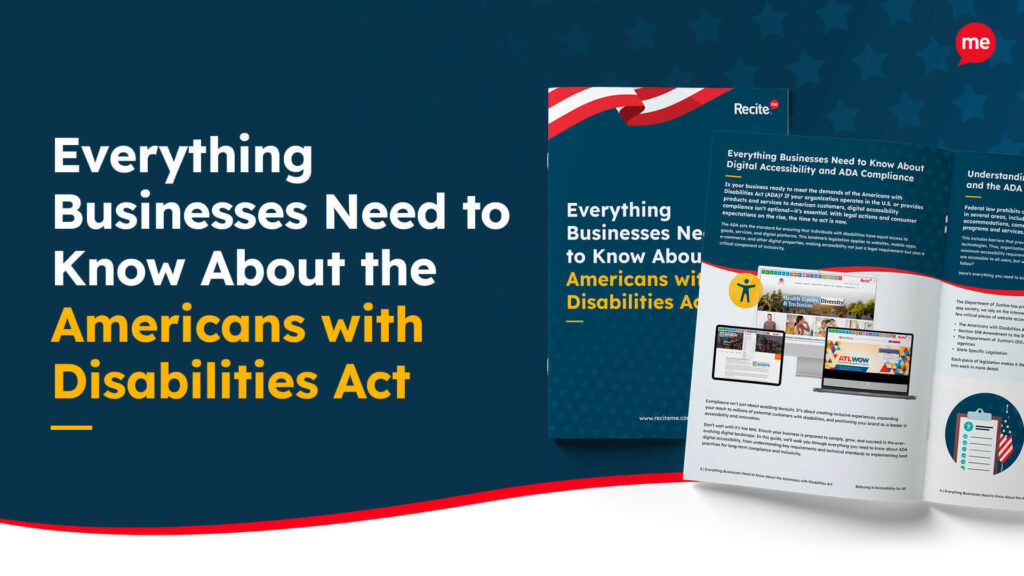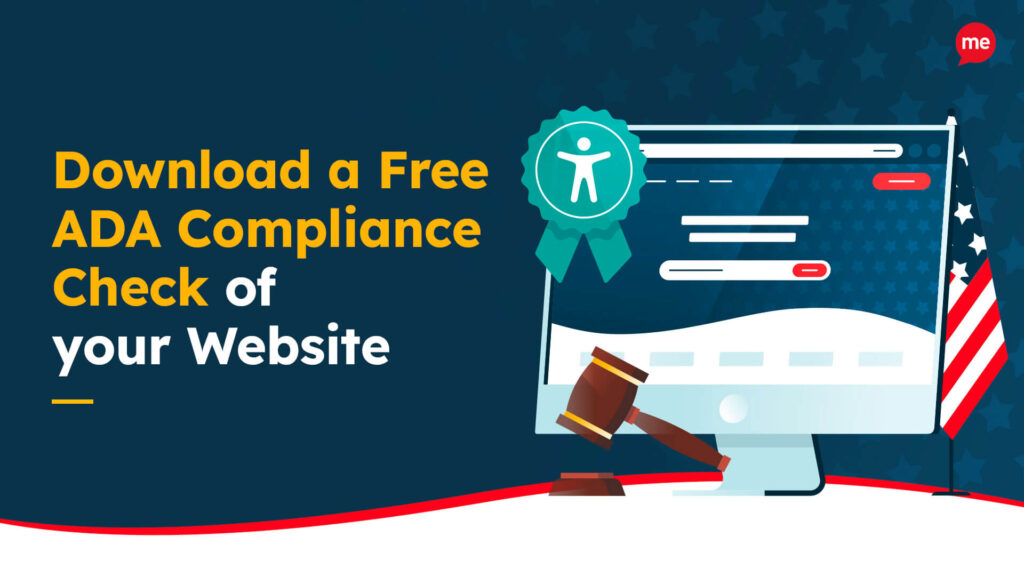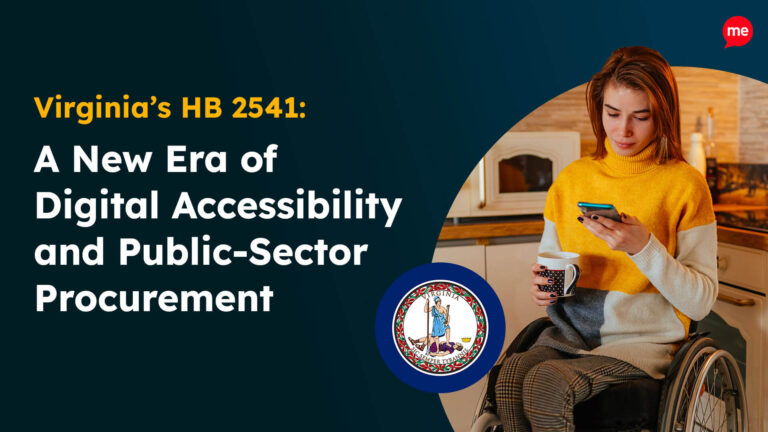Get A Free ADA Compliance Audit Of Your Website
Download NowThe Americans with Disabilities Act (ADA) mandates, among other things, that websites must accommodate users with disabilities. Failing to meet these business requirements can result in hefty legal penalties, reputational damage, and lost growth opportunities. In fact, complying with the ADA holds particular weight in Florida, where nearly 21% of the population are aged 65 or older – a demographic known for its high rates of disability and dependence on accessible digital features.
Curious to know whether the ADA applies to you and what you can do to stay compliant? This guide has everything you need to know.

Understanding the role of the Americans with Disabilities Act in Florida
The Americans with Disabilities Act (ADA) is a federal law aimed at eliminating discrimination against individuals with disabilities. Enacted in 1990, it came about predominantly as a means of improving access to physical spaces, however, since the rise of the internet, its scope has expanded to include websites, mobile applications, and other digital platforms.
The Americans with Disabilities Act (ADA) is divided into five titles; each one carries with it different requirements for different types of organizations. Together, the five titles lay out exactly what is required by the ADA and by whom it’s required from.
Here is a brief summary of each title:
- Title I: Employment — Prohibits discrimination against qualified individuals with disabilities in hiring, promotions, and other aspects of employment. Businesses with 15 or more employees must provide reasonable accommodations unless it causes undue hardship.
- Title II: Public Services — Requires state and local governments, as well as public entities, to make programs, services, and activities accessible. This includes public transportation systems.
- Title III: Public Accommodations — Mandates that private businesses serving the public, like restaurants, hotels, and retail stores, ensure their facilities and services are accessible. Crucially, this includes websites.
- Title IV: Telecommunications — Requires telecommunications companies to provide services that enable individuals with hearing or speech impairments to communicate over the telephone.
- Title V: Miscellaneous Provisions — Covers additional aspects like retaliation protections, relationships with other laws, and clarifications on the ADA’s scope.
Want to make sure your website is compliant with the Americans with Disabilities Act? Then unlock the ADA compliance checklist now. Discover actionable steps to ensure ADA compliance, helping you avoid lawsuits and any other negative consequences of non-compliance.
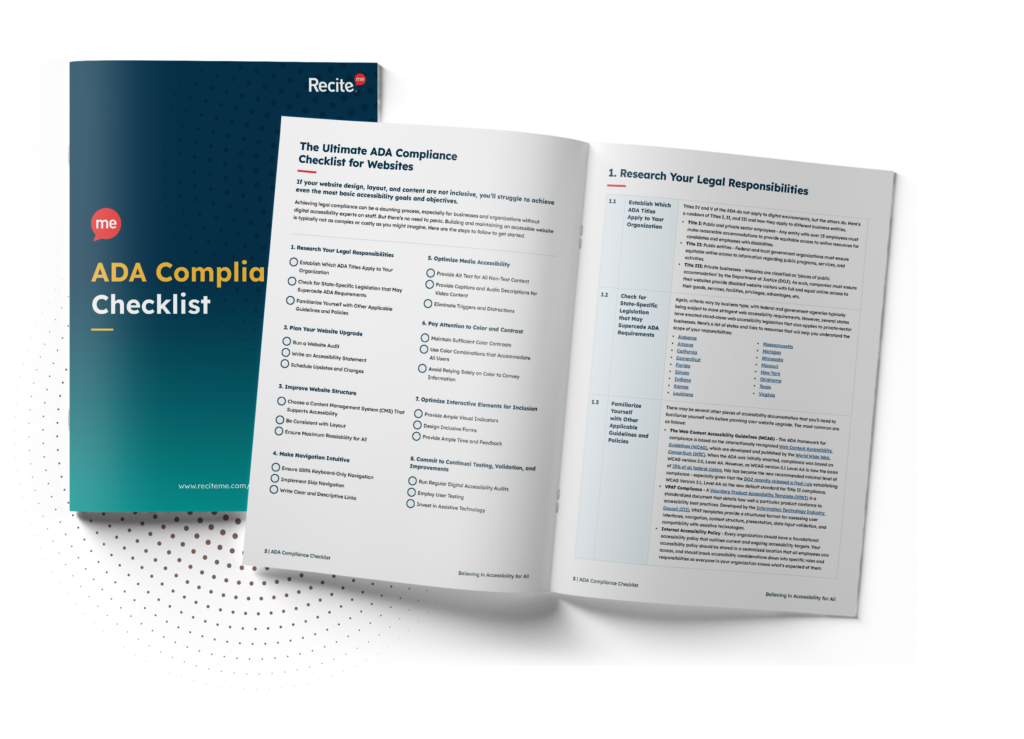
Which organizations do the Florida ADA guidelines apply to?
By analyzing the contents of the ADA’s various titles, we can begin to understand which organizations are legally required to comply. Fortunately, we’ve already done this task for you, and as it turns out, the ADA covers some broad ground.
The ADA’s requirements apply in the following circumstances:
- Public Accommodations: Any businesses open to the public, such as restaurants, hotels, retail stores, theaters, and healthcare providers are considered public accommodations. Their products, services, and facilities must be accessible; this includes websites and online services.
- Employers: Companies in Florida with 15 or more employees must provide reasonable accommodations for individuals with disabilities. This could include making online job postings screen-reader compatible, for example.
- State and Local Governments: Government agencies in Florida are required to adhere to ADA regardless of their size, so that all residents can participate fully in civic life.
- Small Businesses and Startups: Even if you’re a small business, ADA guidelines apply as long as your operations are considered public accommodations.

As you can see, ADA leaves room for very few exceptions. Even for those organizations which are exempt, such as private clubs and religious entities, adherence to ADA’s guidelines is still considered a smart business move. It not only safeguards against potential lawsuits, but demonstrates to your customers a commitment to inclusion.
Tips to making your website ADA compliant in Florida
Since the rise of computers and the digital world, ADA lawsuits in Florida have soared. In September 2024 alone, 281 lawsuits were filed across the U.S., with Florida leading the way in the number of cases. This showcases the urgent need for Florida-based businesses to make accessible adjustments to their websites and digital platforms, keeping them ADA-compliant. Let’s take a closer look at some key strategies.
Continuously accessibility testing
If you have a website, and you’re not sure if it’s ADA-compliant, your first port of call should be to conduct an accessibility test for ADA. Tests can be carried out using a variety of different methods and give you an accurate representation of your website’s overall accessibility.

Automated tests, for example, conduct rapid scans of your website’s code in search of any inaccessible features. Tools like our accessibility checker use the Web Content Accessibility Guidelines (WCAG) — an internationally-recognized set of accessibility standards — as the benchmark with which to compare test results. This gives you peace of mind, knowing that your test results align with legal requirements.
Two other types of auditing are manual and user tests. Manual accessibility testing is typically conducted by accessibility experts or web developers who are trained in WCAG standards. They trawl through your site’s web pages, putting things like keyboard navigation and screen-reader compatibility to the test. Manual audits often cover slightly more nuanced issues that algorithms tend to overlook.
User testing takes auditing one step further by identifying accessibility issues on a more granular level. It is the pinnacle of accessibility testing. Here, existing disabled users are given the opportunity to provide constructive feedback on your site’s accessibility from their perspective. This usually results in the emergence of some rather sophisticated issues that both automated and manual testing methods are likely to miss.
For the most comprehensive approach to accessibility testing, a combination of all three methods should be employed. This will give you the best chance possible at catching all inaccessible features. Testing should also be conducted regularly to avoid falling behind the law.
You should also regularly monitor accessibility on your website by conducting tests once a month, or after every design adjustment. This setup favors proactivity, helping you catch accessibility issues before your customers do, reducing the likelihood of lawsuits.
Meet standards of WCAG 2.1 Level AA as a minimum
After conducting your first accessibility audit, the logical next step is to act on its findings. To do this, you will need to use the WCAG as your benchmark. These standards are grounded in four core principles called POUR: perceivable, operable, understandable, and robust.
WCAG uses these principles to offer practical guidance on a range of different website aspects, from color contrast and keyboard navigation to compatibility with assistive technologies like screen readers. For example, WCAG specifies which color contrast ratios are required to achieve different levels of accessibility, of which there are 3: Level A, Level AA, and Level AAA.
Although ADA does not mandate adherence to any specific compliance level or version of WCAG, it is generally accepted that a minimum of WCAG 2.1 Level AA is needed to avoid any sort of legal backlash. With that said, unless you have the capacity and resources to set your sights higher, you should aim to follow Level AA guidance.

Risks of not complying with Florida ADA standards
In addition to legal challenges, failing to make your website accessible can bring with it several risks which threaten the long-term viability of your business. Understanding and mitigating these risks is essential for safeguarding your business’s reputation and maximizing its potential in Florida’s competitive market.
Legal Penalties
Non-compliance with ADA standards can result in hefty fines, with penalties ranging between $75,000 and $150,000, depending on whether it’s a first offense or a repeat violation. The cost of legal fees and settlements can strain your financial resources even further, dealing a big setback to your bottom line.
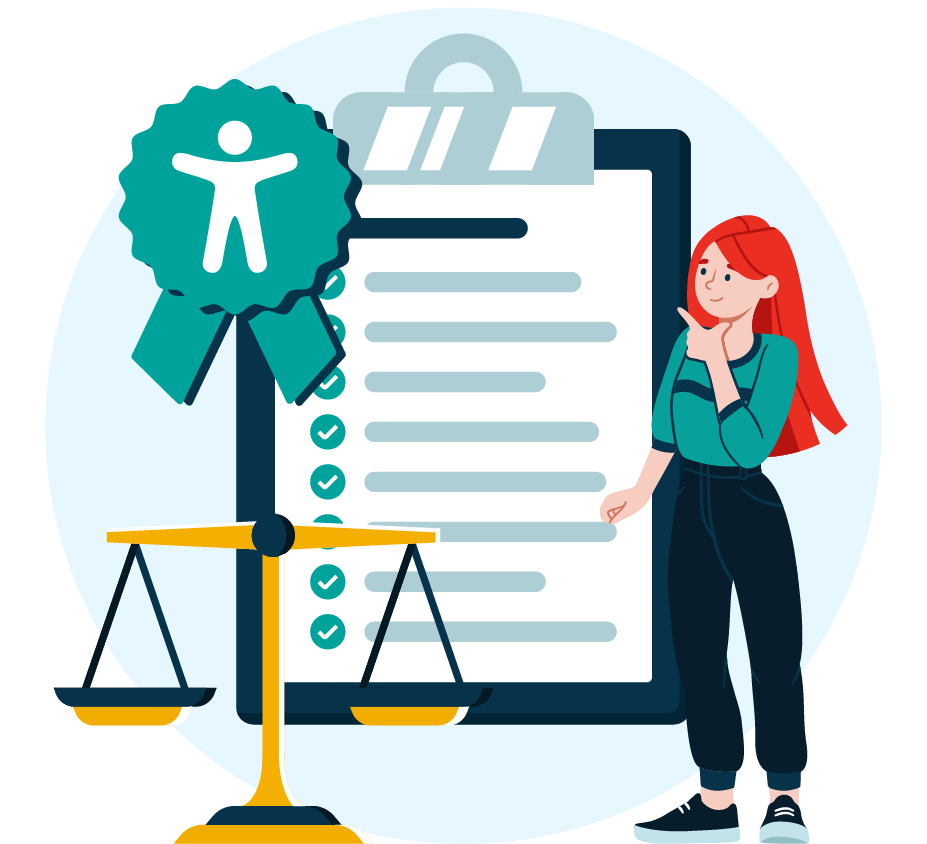
Reputational Damage
We live in a world where consumers are increasingly making ethical purchasing decisions. This highlights a trend in which the general public are vastly in favor of diverse, inclusive, and accessible environments. Should you face any ADA-related lawsuits, and this becomes public knowledge, you risk tarnishing your brand’s reputation for years.
Social media and online reviews can also have a lasting impact on public perception. This is important because even if a lawsuit filed against you is deemed unsuccessful, there is a chance that a stain will remain on your reputation. Remove all risk by complying with the ADA in its entirety and implementing accessibility best practices company-wide.
Loss of Business Opportunities
Failing to comply with the ADA represents a lost opportunity for growth. The disabled community is a significant and often under-served market segment. By not making your website accessible, you are excluding a large potential customer base, missing out on the chance to expand your reach.
Get a free automated ADA compliance audit of your website. This audit will highlight compliance violations and provide the recommendations needed to meet ADA compliance standards.
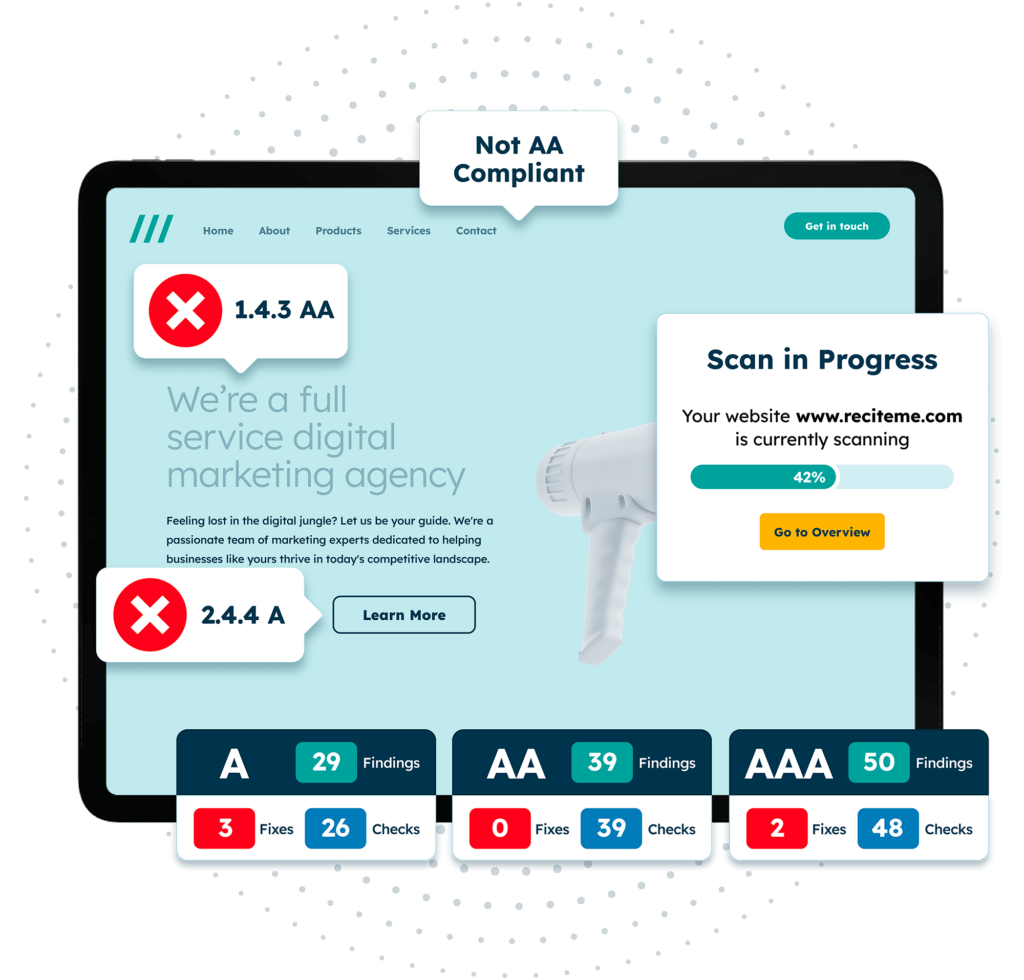
Previous ADA lawsuits that have been brought to Florida courts
Florida has seen several high-profile ADA lawsuits, which highlights the importance of compliance. Let’s take a closer look at some of the main cases:
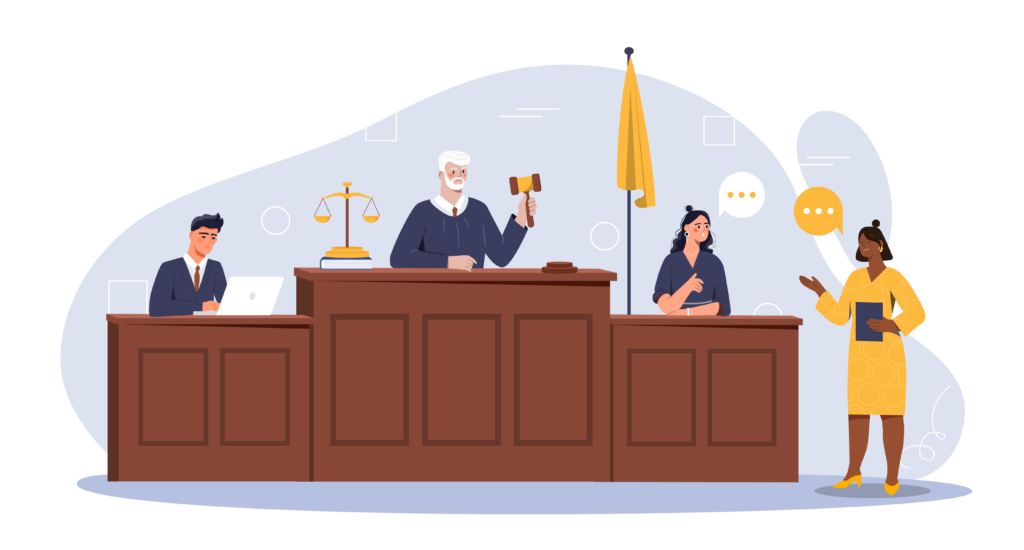
Haynes v Hooters
Haynes v Hooters is a fairly well-known ADA lawsuit in Florida, where Mr. Haynes sued Hooters, alleging that its website was not accessible to visually impaired users, violating the ADA.
This lawsuit came shortly after another similar case brought by a different plaintiff, Mr. Gomez, which had been settled out of court. In the Gomez settlement, Hooters agreed to make its website compliant with WCAG 2.0 within 12 months. However, when Haynes filed his claim, the court found that the required accessibility improvements had not been fully implemented.
nitially, the trial court sided with Hooters, declaring the case moot due to the previous settlement. However, upon appeal, the Eleventh Circuit Court overturned this decision. The court determined that since there was no conclusive evidence that the website was fully compliant, and because Haynes was not a party to the earlier settlement, his claims remained valid. The ruling emphasized that a private settlement does not shield businesses from future ADA claims unless compliance is achieved and maintained.
Gil v Winn-Dixie
In the case of Gil v Winn-Dixie, a visually impaired plaintiff filed a lawsuit against the grocery chain Winn-Dixie in Florida, alleging its website was inaccessible to screen readers. In June 2017, the Court for the Southern District of Florida issued an injunction that required Winn-Dixie to make its website accessible to those with disabilities and provide mandatory web accessibility training for its employees. The case set a precedent by confirming that websites connected to physical stores fall under ADA Title III.
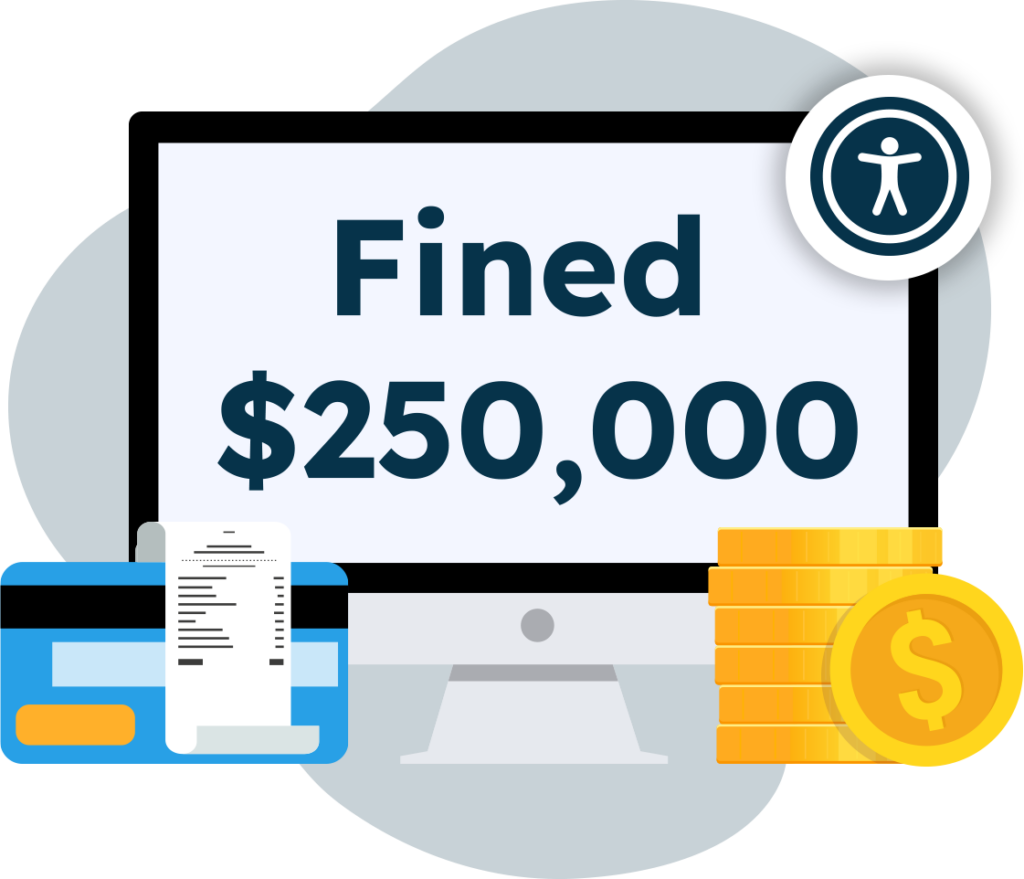
Circle K
Circle K convenience stores faced legal action based on accusations that they failed to offer reasonable accommodations to disabled workers. The Equal Employment Opportunities Commission (EEOC) investigation found that Circle K had, among other things, placed affected employees on involuntary unpaid leave and even terminated their contracts in some instances.
As a result of the investigation, and as part of the settlement, Circle K agreed to pay $8 million, provide anti-discrimination training for all employees, and update its disability policy. This case underscores the need for employers to understand laws like the ADA.
Need more help becoming ADA compliant?
The following resources are packed full of actionable tips and expert advice for making your digital content compliant with the Americans with Disabilities Act:
Free ADA Accessibility Training
Take the first step to ADA compliance by completing our training course.
Free ADA Accessibility Guide
Ensure your organization is meeting the requirements for ADA compliance.

